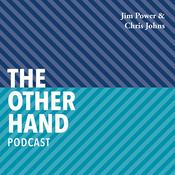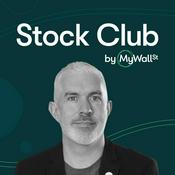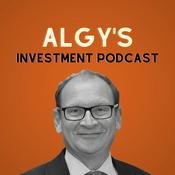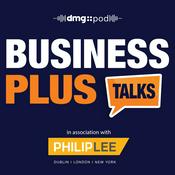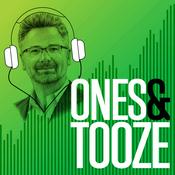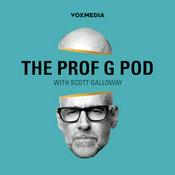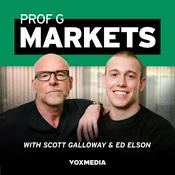502 episodes

Building Shops That Last: The Final Lesson of Machine Shop MBA, 501
29/12/2025 | 52 mins.
As we close out 2025, we're wrapping up more than just a year. This episode marks the conclusion of the Machine Shop MBA series, a collaboration with CLA and Modern Machine Shop built around insights from the Top Shops benchmarking program. What started as a practical exploration of shop metrics ends with a much bigger question: what truly separates shops that survive from shops that endure? For this final chapter, we're joined again by Brent Donaldson of Modern Machine Shop, who helped kick off the series earlier in the year. Drawing from hundreds of shop visits and years of benchmarking data, Brent helps us connect the dots across operations, finance, leadership, and strategy. Together, we reflect on a clear shift happening across manufacturing: moving away from pure "rise and grind" thinking and toward intentionally designed systems. Throughout the episode, we revisit five deceptively simple questions pulled directly from the Top Shops survey. These questions challenge assumptions and expose where real opportunity lives. From RFQ response time and revenue per employee to reinvestment discipline, standardized scheduling, and succession planning, each one reinforces a central theme we've explored all year. Rather than chasing the next machine or relying on one big customer, the most resilient shops we see are building repeatable processes, measuring what matters, and reducing dependence on tribal knowledge. This conversation serves as both a reflection on what we've learned through the Machine Shop MBA series and a call to action as we head into 2026. If there's one takeaway we hope sticks, it's this: the shops that last aren't just collections of people and equipment. They are systems. Designed on purpose. Improved on purpose. And built to outlast any one individual. Segments (0:00) Wrapping up 2025 and closing out the Machine Shop MBA series (0:36) Why we created the series and partnered with CLA and Modern Machine Shop (2:25) Why you need to head to the 2026 IMTS Exhibitor Workshop (4:34) The shift from viewing shops as machines and people to viewing them as systems (7:52) Moving from survival mode to disciplined, systems-based thinking (12:33) Top Shops Question #1: RFQ response time as a competitive advantage (15:55) Top Shops Question #2: Revenue per employee as a true efficiency metric (17:15) What's Your Method? The unique financing process with Methods Machine Tools (26:47) Grow your top and bottom line with CliftonLarsonAllen (CLA) (27:37) How automation, workholding, and systems increase output per person (32:16) Top Shops Question #3: Reinvesting in equipment, software, and training (36:50) Why consistent reinvestment beats sporadic big spending (37:51) Top Shops Question #4: Standardized scheduling versus tribal knowledge (40:22) How poor systems create stress and constant firefighting (43:05) Top Shops Question #5: Leadership and ownership transition planning (46:01) The Top Shops 2026 Benchmarking survey opens February 1st, 2026 (47:27) How benchmarking accelerates maturity and reveals real gaps (48:19) How we use the Top Shops survey as part of annual strategic planning (49:19) Looking ahead to 2026 and continued collaboration (50:00) Why we love the SMW Autoblok catalog and quality (51:11) Final call to action and why benchmarking matters Resources mentioned on this episode Why you need to head to the 2026 IMTS Exhibitor Workshop What's Your Method? The financing process with Methods Machine Tools The Top Shops 2026 Benchmarking survey opens February 1st, 2026 Check out the SMW Autoblok catalog and quality Connect With MakingChips www.MakingChips.com On Facebook On LinkedIn On Instagram On Twitter On YouTube

At the Boring Bar: Rare Perfection, Real Talk, and the Systems That Separate Top Shops, 500
22/12/2025 | 1h 50 mins.
Some episodes are planned. Others are produced. And then there are episodes like this one—where the setting, the people, and the moment all collide into something memorable. For the 500th episode of MakingChips, the team gathered once again At the Boring Bar for an unfiltered, bourbon-fueled roundtable with leaders from across the manufacturing ecosystem. Recorded live at Roush Yates Manufacturing Solutions during the Top Shops Conference in Charlotte, this special annual episode brings together shop owners, executives, advisors, and industry partners for the kinds of conversations that usually happen after the microphones are turned off. The drinks are poured, the guardrails come down, and the real stories start to flow. What emerges is an honest discussion about what truly separates top-performing shops from the rest. Not hype. Not buzzwords. But culture, systems, communication, and the discipline to do the hard things consistently—especially when cash flow is tight, customers are demanding, and complexity is rising. From benchmarking through the Top Shops survey to navigating OEM power dynamics, cash flow strain, customer communication, and the maturity of manufacturing as an industry, this conversation reflects how far the industry has come—and how far it still needs to go. Along the way, there are laughs, sharp takes, personal stories, and more than a few lessons earned the hard way. This is At the Boring Bar. And for Episode 500, it's exactly where the MakingChips conversation belongs. Segments (0:00) Setting the scene at Roush Yates Manufacturing Solutions during Top Shops (1:47) Introductions from shop leaders, OEMs, advisors, and industry partners (6:14) What actually separates Top Shops from the middle of the pack (10:15) Core values, culture, and leadership maturity (15:57) IMTS, trade shows, and the pressure to bring something new (22:06) Marketing, differentiation, and industry buzzwords (26:00) AI, automation, and separating real value from hype (31:51) Cash flow realities and long payment terms (37:15) OEM power dynamics and positioning as a second source (45:57) Communication as a competitive advantage (55:40) Systems, standards, and operational discipline (1:02:10) Data visibility, professionalism, and rising expectations (1:12:45) Scaling culture, teams, and leadership (1:26:45) Developing people and building trust (1:37:15) Industry maturity and cross-industry learning (1:47:45) Final reflections from At the Boring Bar Resources mentioned on this episode CliftonLarsonAllen (CLA) Top Shops IMTS 2026 Methods Machine Tools Connect With the Guests/Hosts Isaac Burton Jason Davis Nick Goellner Mike Payne Paul Van Metre Jamie Marzilli Leslie Boyd Jon Star Connect With MakingChips www.MakingChips.com On Facebook On LinkedIn On Instagram On Twitter On YouTube

From Scarcity to Sales Pipeline: How Smart Shops Take Control of Growth with Factur, 499
15/12/2025 | 1h 2 mins.
What happens when a machine shop does everything right operationally but still feels exposed when markets shift, customers pull back, or one industry cools overnight? In this episode of MakingChips, the conversation turns squarely toward one of the most uncomfortable and misunderstood areas of manufacturing leadership: proactive sales and diversification. We're joined by Gabe Draper, founder of Factur, and Alan Hartmann, CEO of Hartmann's Inc., a multi-generation Texas manufacturer. Gabe shares a raw and honest origin story that starts with growing up in a manufacturing family, fighting to save a struggling shop, riding the oil and gas rollercoaster, and ultimately losing nearly everything when the downturn hit. That experience became the catalyst for building Factur, a company designed to help shops avoid reactive, last-minute sales cycles by intentionally filling their pipeline. Alan brings the perspective of a well-run, highly capable shop that realized success alone wasn't protection. With major customers concentrated in just a few industries, Hartmann's needed diversification, not because business was slow, but because resilience matters. Through their partnership with Factur, Alan explains how proactive sales, clearer positioning, and market intelligence led to rapid customer growth, industry expansion, and the confidence to invest in new capabilities. We unpack the difference between scarcity and abundance mindsets, why most shops accidentally commoditize themselves, and how sales, operations, and finance must work together as equal legs of the stool. From aerospace and medical to space flight and Swiss machining, this episode offers a candid look at how manufacturers can stop waiting for the phone to ring and start taking control of their future. Segments (0:00) Holiday banter and introducing guests Gabe Draper and Alan Hartmann (4:32) Grow your top and bottom-line with CliftonLarsonAllen (CLA) (5:09) Gabe Draper's origin story and what led to founding Factur (10:53) The danger of customer and industry concentration (13:55) Alan Hartmann's multi-generation shop story and long-term customer relationships (18:22) Reactive vs proactive sales and why diversification matters (22:31) Breaking down Factur's full sales funnel (26:03) Why technical "hunters" outperform generalist sales roles (28:16) "What's Your Method": Aerospace Success with Zach from Methods (34:50) Check out the SMW Autoblok catalog for your workholding (36:04) Choosing the right sales and marketing services with Factur (40:02) Scarcity vs abundance mindset in shop growth (42:58) Using sales insights to justify equipment investments (46:05) How one new customer quickly became a top account (48:37) Managing risk across aerospace, medical, and space markets (51:11) Filling your capacity with the right work first (55:30) Sales specialization as shops scale (56:22) How manufacturers can engage Factur for market intelligence (1:00:13) Talent challenges and Hire MFG Leaders Resources mentioned on this episode Grow your top and bottom-line with CliftonLarsonAllen (CLA) Methods Machine Tools Check out the SMW Autoblok catalog for your workholding Get your free market intel report at https://facturmfg.com/chips/ Hire your next leader using our recruiting service—Hire MFG Leaders Connect With MakingChips www.MakingChips.com On Facebook On LinkedIn On Instagram On Twitter On YouTube

Chaos, Curiosity & Chipmaking: Larry Robbins' Wild Ride Through Manufacturing, 498
08/12/2025 | 47 mins.
Some conversations feel scripted. This one… absolutely did not. Larry Robbins walked in ready to talk life, passion, family, culture, workholding, philosophy, and whatever else popped into his head — and somehow it all connected back to manufacturing. This episode of MakingChips is one of the most unhinged, hilarious, honest, and wisdom-packed conversations we've ever recorded. Larry has been in the industry for nearly 46 years, and he's collected enough stories, scars, and laughs for ten careers. From his father dragging him into the business ("long hair doesn't work here") to his famous explanation that SMW makes "magic hands," Larry blends humor and experience into lessons every shop owner needs to hear. His passion for the industry is unmatched — and his candor is even better. Throughout the episode, the crew dives into culture, leadership, lying (don't), modularity, flexibility, high-density workholding, predictable setups, financing equipment, and why you should stop crawling across a dollar to pick up a dime. Larry opens up about the future of manufacturing, warns against bad advice, and reminds everyone that machining touches every single thing in the world. If you're ready for an episode that's equal parts educational and unhinged in the best possible way, buckle up — Larry Robbins is in rare form. Segments (1:00) Larry's background, early failures, and the stories that shaped his approach to leadership (3:31) An investment in ProShop is an investment in your business (3:32) Culture, loving your work, and leadership lessons (5:07) Entering the family business, retirement humor, and long-term commitment (7:23) The reality of workplace culture, honesty, and handling difficult employees (10:02) Integrity, truth-telling, and early lessons on character (13:18) Appreciating machinists and the unseen parts of manufacturing (15:05) Workholding vs. cutting tools and why workholding matters more than people think (16:09) "Magic hands" — Larry's explanation of workholding for a 5-year-old (17:20) Workholding misconceptions and the cost of poor setups (19:00) Vendor trust, trying equipment, and choosing partnerships wisely (20:22) Setup reduction, rigidity vs. flexibility, and predictable processes (22:12) Cutting 12-hour setups and the value of internal vs. external setups (24:16) Why we love Phoenix Heat Treating for Outside Processing (25:24) Expensive machines + cheap vices = lost potential (27:26) Modular workholding, infinite adjustment, and the origins of the industry (29:18) When not to sell a customer — long-term trust over short-term gain (30:19) Why shops "don't know what they don't know" about proper workholding (31:58) Financing workholding and proving ROI to shop owners (33:09) Tooling certs and buying the solution, not just the machine (35:24) High-density workholding and maximizing machine real estate (37:12) Protecting customers from bad investments and the role of good vendors (38:01) The LEGO analogy and building reusable workholding systems (40:13) Trusting experts and using the right resources in decision-making (41:19) Grow your top and bottom line with CliftonLarsonAllen (CLA) (41:57) Buzzwords like Industry 4.0 vs. solving real problems (43:49) Competing with global labor costs and running unattended (44:19) Extending the life of old machines with better processes (46:41) Universal truth: If you're not making chips, you're not making money Resources mentioned on this episode Connect with Larry Robbins and SMW Autoblok An investment in ProShop is an investment in your business Why we love Phoenix Heat Treating for Outside Processing Grow your top and bottom line with CliftonLarsonAllen (CLA) Smart Money Moves: Equipment Financing Tips with Ty Willis Connect With MakingChips www.MakingChips.com On Facebook On LinkedIn On Instagram On Twitter On YouTube

The Double Your Value Mindset: Planning, Growth & Real Talk from the EGS Event, 497
01/12/2025 | 44 mins.
In this special episode of MakingChips, we broadcast from the EBITDA Growth Systems Double Your Value Planning Event—a gathering designed to pull shop owners out of the day-to-day grind and force intentional thinking about long-term growth. This year's event was hosted at the Sandvik Coromant facility in Mebane, North Carolina, creating a perfect backdrop for conversations about planning, strategy, and culture. Paul is joined by three key voices who bring decades of hard-earned manufacturing wisdom: Jim Carr, a founding voice of MakingChips; Zach Overton, who is deep in the trenches of leading a multi-generation shop through transition and growth; and David Capkovitz, co-founder of EBITDA Growth Systems, whose strategic coaching framework is the backbone of this entire event. They pull back the curtain on why the event exists, how planning actually becomes actionable, and how shops can double their value in three years. Together, they dive into the realities every manufacturer faces—financial blind spots, operational challenges, cultural shifts, succession dilemmas, and the emotional weight of leadership. David's perspective as a coach blends seamlessly with Jim and Zach's lived experiences, creating a conversation that's equal parts strategic and deeply human. This episode highlights why stepping away from the shop floor is often the missing link for achieving the next level of growth. Whether you're planning for 2026, building resilience for a generational handoff, or simply trying to stop fighting fires, the insights shared here offer a clear direction forward. And yes—there's also a Cheerwine Old Fashioned or two. If you're ready to plan your next chapter with more clarity and confidence, this episode gives you the mindset and the roadmap to get started. Segments (0:00) Setting the scene: EGS happy hour, heaters, and Cheerwine Old Fashioneds (1:11) Paul and Jim revisit the origins of MakingChips and Jim's full-circle moment (2:35) What the Double Your Value Planning Event is & how it's grown under EGS (3:32) Introducing Zach Overton and his connections with Paul & Jim (4:36) Jim's memories and insights from advanced machining processes (6:38) Grow your top and bottom line with CliftonLarsonAllen (CLA) (7:14) David explains why EGS created the event and its planning philosophy (10:23) The power of peer-to-peer conversations among manufacturers (11:54) Identifying obstacles to growth and building criticality assessments (13:15) Zach shares his takeaways from stepping out of day-to-day firefighting (15:26) Jim describes how EGS supports Carr Machine as a Fractional CFO (18:08) Lighter moments: drink taste-testing and event humor (19:53) Invest in your business by investing in ProShop ERP (21:27) Zach explains how David coaches Overton Industries operationally (24:15) How manufacturers can start planning intentionally for 2026 (28:08) Why shop owners need guidance, accountability, and encouragement (30:11) Culture as the foundation of growth: reflections on Mike Hirsh's talk (32:13) Jim's transformation story: shifting from a lifestyle business to scalable growth (36:21) Why you need to check out the SMW Autoblok catalog (37:31) Did older generations only want lifestyle businesses? (39:00) Zach on pushing back in automotive to protect margins (40:38) Navigating multi-owner family decisions and succession complexity (42:12) David reflects on the personal relationships EGS builds with clients Resources mentioned on this episode Connect with EBITA Growth Systems Connect with Jim Carr on LinkedIn Connect with David Capkovitz on LinkedIn Connect with Zach Overton on LinkedIn Connect with Mike Hirsh on LinkedIn Peter Doyle on Machine Shop MBA and Machine Shop Mastery MC070: Leadership, Action, and a British Accent – with Sean Holt Invest in your business by investing in ProShop ERP Why you need to check out the SMW Autoblok catalog Connect With MakingChips www.MakingChips.com On Facebook On LinkedIn On Instagram On Twitter On YouTube
More Business podcasts
Trending Business podcasts
About Making Chips Podcast for Manufacturing Leaders
Listen to Making Chips Podcast for Manufacturing Leaders, Money Talks and many other podcasts from around the world with the radio.net app

Get the free radio.net app
- Stations and podcasts to bookmark
- Stream via Wi-Fi or Bluetooth
- Supports Carplay & Android Auto
- Many other app features
Get the free radio.net app
- Stations and podcasts to bookmark
- Stream via Wi-Fi or Bluetooth
- Supports Carplay & Android Auto
- Many other app features


Making Chips Podcast for Manufacturing Leaders
download the app,
start listening.
